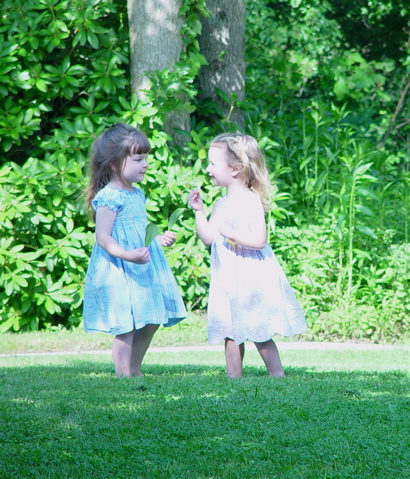
Franky Schaeffer has a chapter entitled “Truth Versus Pietism” in his book, Sham Pearls for Real Swine. “Truth Versus Pietism” describes two ways to think about reality, basically seeing it either as a unified whole or as split into secular and sacred realms. How we understand the gospel, pursue Christian maturity and engage the world is determined by which of these two views we embrace. In previous posts I’ve discussed what the gospel and Christian maturity is like from the perspective of these two paradigms, and now I’d like to consider how the idea of engaging the world is affected.
“Truth” and “Pietism” think about the world differently. A Truth paradigm sees the world as good and sacred. Schaeffer explains it this way, “[Truth] holds that God is the Lord of all reality and that He created all that is visible and invisible. Because of this, we live in an orderly universe that can be rationally investigated and understood through science and the arts.” Consequently, those who embrace the Truth tradition are at home in this world because it is God’s, even though it is fallen. Fallenness doesn’t mean the visible world is illegitimate or evil, rather it describes the moral state of man and its impact on creation.
The Pietism tradition divides the spiritual from the visible world around us. The “truth” of the spiritual and the “truth” of the physical are not one. Something can be “true” spiritually and not “true” physically. The Church can be right spiritually but wrong scientifically. Schaeffer elaborates, “Pietism gives people a fractured reality, one in which the physical world, the body, the arts, economics, the sciences, the humanities, and sexuality are believed to be at war with the soul.” A pietist is ambivalent towards the world. Three examples where this ambivalence affects the way a pietistic Christian engages the world are how commitments are made and kept, activities are conducted and the arts are understood.
Pietists have no problem breaking commitments if they “feel led of the Lord” to do so. Since the spiritual is supreme, it doesn’t matter what damage is done to another person if the “Lord wills” the pietist to change his direction and break a commitment. Or he may be loose with the facts when making a commitment because he feels it’s God’s will to pursue this particular course. The pietist often will not do the “due diligence” necessary simply because he “senses” it’s God’s will and that is good enough for him. This makes the pietist somewhat unreliable and manipulative, but it also makes him vulnerable to emotional appeal and being taken advantage of. In my experience, some of the worst contractors and business people one can deal with are Christians. I think this is because of Pietism.
For the Pietist, ordinary life and activities need to be “Christianized” in order to be legitimate. Watching a football game with church members must include a half-time devotional and prayer. The refrigerator needs to get decorated with little scripture versus. A missions trip is the only justifiable way to travel and see the world. “The pietistic need to Christianize reality indicates a worldview that does not fundamentally understand or believe that reality is already God’s and the Christianity is truly Truth,” says Schaeffer. More often than not, a full fledged pietist is motivated by a guilty conscience to sanitize all they do in a misdirected attempt to feel spiritual.

Art is misunderstood by Pietism. It is seen from a utilitarian point of view. It must be useful. In other words, art must spread the Christian message. Beauty isn’t seen as its own justification. Truth can’t be explored without some “spiritual” goal. Again quoting Schaeffer, “…good art, like good science, describes the truth of a small or large part of reality without regard to maintaining the respectability of the artist. The fit subject for Christian art, therefore, is reality.” With Pietism, however, art is betrayed. Christian fiction tends to be one long, boring evangelistic tract. Christian music is often uninspired and banal. All stories must have a happy ending or at least a moral. This may be why many Christians’ tastes never rise above kitsch.
There are many more areas where Pietism stunts or distorts our participation in the world. I’ve only touched on a few. Schaeffer covers more in his book. Next post, I will make a chart that contrasts many aspects of Truth and Pietism.